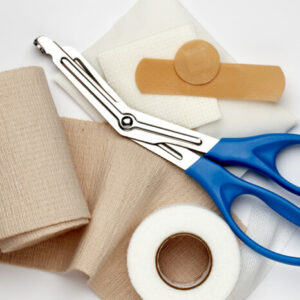 A wide range of wound dressings available in the market makes it difficult to pick the right proposition for a specific purpose. Let’s examine the main types of wound dressings and discuss the cases when each of them should be applied.
A wide range of wound dressings available in the market makes it difficult to pick the right proposition for a specific purpose. Let’s examine the main types of wound dressings and discuss the cases when each of them should be applied.
- Gauze Dressings are made of woven and non-woven materials. This type of wound dressings is used on infected wounds, wounds that require packing, wounds that are draining, wounds requiring very frequent dressing changes.
- Transparent Film dressings allow oxygen to penetrate through the dressing to the wound. Such dressings are commonly made of a polyurethane material and used on partial-thickness wounds, donor sites, minor burns, stage I and stage II pressure ulcers.
- Foam dressings are composed of a film-coated gel or a polyurethane material. It’s commonly used on pressure ulcers, minor burns, skin grafts, diabetic ulcers, donor sites, venous ulcers.
- Hydrocolloid dressings are very adsorbent and have a strong adhesive backing. It’s commonly used on burns, pressure ulcers, venous ulcers.
- Alginate dressings may be woven or nonwoven and form a hydrophilic gel when they contact exudate from the wound. Alginates are commonly used on venous ulcers and wounds with tunneling.
- Composite dressings can be used for primary or secondary purposes. Such dressings are a combination of a moisture retentive dressing and a gauze dressing. They are used on a wide variety of wounds.
